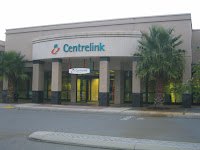If you want to reduce tax then government expenditure has to be cut. The main expenditure item for the Commonwealth government is welfare. So real tax cuts require real welfare cuts. That is the reality that politicians who propose tax reform don't like to mention.
Achieving significant tax cuts is politically difficult. The usual solution is to admit theres a lot of middle class welfare and try to impose a means test to better target expenditure. The result is a complex and more expensive to administer welfare system and an increasingly disgruntled middle class. They claim with some justification that as the main source of tax revenue they should receive compensatory payments in return – the old “I paid tax all my life” argument. Thats the reason we have a high amount of tax churning, tax taken from taxpayers and then paid back as welfare, the main beneficiary are the public servants who administer the schemes.
The political reality is that people have become accustomed to the current system and any proposal for substantial tax cuts and commensurate welfare cuts would be viewed as an attack on basic social security. The government would lose office.
Theres is a better way, don't cut welfare but replace it with something better. A system based on wealth creation and personal responsibility.
For several years the government has been running substantial budgetary surpluses. Those surplus have been invested in the Future Fund or some other government investment scheme. Taxes should be raised to pay for the proper function of government not invested in the stock market or to set up a multi- billion dollar slush fund. The money rightfully should be in the pockets of the working men and women of Australia.
The reason given for the large surpluses is to prevent the economy over the economy heating, causing inflation and higher interest rates. While this writer is in no position to question the governments reasoning it seems at best unimaginative.
I propose that the surplus be given back to workers as a tax cut or tax credit. However it would not go directly go into pay accounts but into a special investment fund earning interest – call is something like Personal Welfare Account, linked to the individual's superannuation. There are about 10 million workers in Australia, if the $20 billion surplus expected this year was used this way it would give every worker a $2000 tax refund. Within few years every worker would have $6000-$8000 in their account. At that stage the PWA would be able to cover the first six months of unemployment at the same or higher rate as the dole. There would be no means test and minimal contact with Centrelink required. As the fund grows it could be used to replace other welfare payments. On retirement the money would be rolled into your superannuation. This has the great advantage that as the PWA grow welfare can be reduced allowing further tax cuts without the necessity of cutting government income support.
Such a scheme would instigate a virtuous cycle of increasing private welfare provisions and tax cuts the reverse f the current situation.
references:
Restoring Self Reliance in Welfare : Twenty Million Future Funds Peter Saunders
Restoring self-reliance in welfare : Six arguments in favour of self funding Peter SaundersRestoring self-reliance in welfare L The $85 billion tax/welfare churn Peter Saunders
A Welfare State for Those Who Want One, Opts-outs for Those Who Don't
